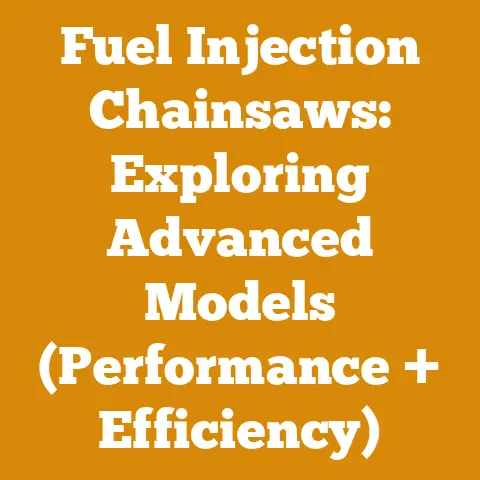Wood Stove with Back Flue (5 Rear-Vent Models Pros Use)
It’s a familiar story: you’re dreaming of a cozy winter, the crackling warmth of a wood stove filling your home. But the reality of installing a wood stove, especially one with a rear vent (back flue), can quickly turn that dream into a budgeting nightmare. Figuring out the true cost, from the stove itself to the installation and ongoing fuel, feels like navigating a dense forest blindfolded. I’ve been there, and I know the frustration. I’ve helped countless homeowners and fellow wood-burning enthusiasts navigate this very process, and I’m here to share what I’ve learned to help you avoid costly mistakes and achieve that wood-heated paradise you’ve been envisioning. Let’s delve into the real costs associated with wood stoves with back flues, focusing on those models professionals rely on.
Why Choose a Rear-Vent Wood Stove?
Before we dive into the costs, let’s quickly address why you might choose a rear-vent wood stove in the first place. In my experience, the main reasons are:
- Space constraints: Rear-vent stoves often fit better in tight spaces or against walls, maximizing room layout.
- Aesthetic preferences: Some homeowners prefer the cleaner look of a rear vent, as it minimizes the visible chimney pipe.
- Existing chimney configurations: In some cases, connecting to an existing chimney is easier with a rear-vent model.
However, rear-vent stoves can sometimes require more complex venting systems, which can impact installation costs.
Part 1: The Initial Investment – Stove Purchase and Installation
The first, and often most significant, expense is the stove itself. Then comes the installation, which can vary drastically depending on your existing setup.
1. Wood Stove Purchase Price: A Deep Dive
The price of a wood stove with a back flue varies widely based on several factors:
- Heating Capacity (BTU): The higher the BTU rating, the larger the area the stove can heat, and generally, the higher the price.
- Material and Construction: Cast iron stoves are generally more expensive than steel stoves due to their superior heat retention. The thickness of the steel and the quality of the welding also play a role.
- Efficiency: More efficient stoves burn less wood and produce less creosote, but they often come with a higher upfront cost. Look for stoves certified by the EPA (Environmental Protection Agency).
- Features: Features like catalytic converters, air wash systems, and automatic draft controls can increase the price.
- Brand Reputation: Well-known brands with a history of quality and reliability often command a premium price.
Data and Benchmarks:
According to recent market research, the average price range for a quality EPA-certified wood stove with a back flue, suitable for heating a medium-sized home (1,000-2,000 sq ft), falls between $1,200 and $4,000. High-end models with advanced features can easily exceed $5,000.
Here’s a breakdown of typical price ranges based on heating capacity:
| Heating Capacity (BTU) | Typical Price Range |
|---|---|
| 30,000 – 50,000 BTU | $1,200 – $2,500 |
| 50,000 – 75,000 BTU | $2,000 – $3,500 |
| 75,000 – 100,000+ BTU | $3,000 – $5,000+ |
5 Rear-Vent Models Pros Use (and their approximate prices):
- Vogelzang TR001 Defender ($800 – $1,200): A budget-friendly option for smaller spaces. Pros often use this in workshops or cabins.
- Pleasant Hearth 1,800 sq. ft. Wood Stove ($900 – $1,500): A popular choice for its balance of price and performance.
- Drolet Escape 1800 ($1,500 – $2,200): Known for its durability and efficient burning. Often used by contractors in rural areas.
- Osburn 2000 ($2,500 – $3,500): A high-efficiency stove with a larger firebox, favored by those who burn wood regularly.
- Hearthstone Clydesdale 8070 ($3,500 – $5,000+): A soapstone stove known for its exceptional heat retention and radiant heat. Professionals often recommend this for homeowners prioritizing comfort and efficiency.
My Experience:
I once opted for a cheaper, unbranded stove to save money upfront. Big mistake. It burned through wood like crazy, produced a ton of creosote, and ultimately cost me more in the long run due to inefficiency and increased chimney cleaning. Lesson learned: investing in a quality, EPA-certified stove is almost always worth it.
2. Installation Costs: The Hidden Variable
Installation costs are where things can get tricky. The price depends heavily on your existing chimney setup, local building codes, and whether you hire a professional installer.
Cost Factors:
- Chimney Inspection: Before installing any wood stove, a professional chimney inspection is crucial. This typically costs between $100 and $300.
- Chimney Liner: If your existing chimney isn’t properly lined or is damaged, you’ll need to install a new liner. Stainless steel liners can cost between $800 and $2,500 installed, depending on the height of the chimney and the complexity of the installation. Rear-vent stoves may require a specific type of liner to ensure proper draft.
- Permits: Most municipalities require a permit for wood stove installation. Permit fees typically range from $50 to $200.
- Professional Installation: Hiring a certified wood stove installer is highly recommended, especially if you’re not experienced with this type of work. Installation costs can range from $500 to $2,000+, depending on the complexity of the job. This includes connecting the stove to the chimney, ensuring proper clearances, and testing the draft.
- Hearth Pad: A non-combustible hearth pad is required to protect the floor from heat. These can range from $100 for a basic pad to $500+ for a custom-made one.
- Chimney Pipe: Connecting the stove to the chimney requires stove pipe. The cost varies depending on the length and type of pipe needed. Expect to pay between $50 and $200 per section.
Data and Benchmarks:
According to the Chimney Safety Institute of America (CSIA), the average cost of a professional wood stove installation, including a chimney liner, ranges from $1,500 to $4,500.
DIY vs. Professional Installation:
While DIY installation might seem tempting to save money, it’s generally not recommended unless you have extensive experience with wood stove installation and are familiar with local building codes. Improper installation can lead to fire hazards, carbon monoxide poisoning, and voiding of your stove’s warranty.
My Experience:
I once tried to save money by installing a chimney liner myself. It was a disaster. I struggled with the installation, made several mistakes, and ultimately had to hire a professional to fix it anyway. In the end, I spent more money and time than if I had just hired a professional from the start.
3. Calculating Total Initial Investment: A Real-World Example
Let’s consider a hypothetical scenario:
- You purchase a Drolet Escape 1800 wood stove for $1,800.
- A chimney inspection reveals that your existing chimney needs a new stainless steel liner, costing $1,800 installed.
- The permit fee is $100.
- Professional installation costs $800.
- You purchase a hearth pad for $200.
- You need 3 sections of stove pipe at $75 each, totaling $225.
Total Initial Investment: $1,800 (stove) + $1,800 (liner) + $100 (permit) + $800 (installation) + $200 (hearth pad) + $225 (stove pipe) = $4,925
This example highlights that the initial investment in a wood stove can be significant, especially when factoring in installation costs.
Part 2: The Ongoing Costs – Fuel, Maintenance, and Safety
Once your wood stove is installed, you’ll need to factor in the ongoing costs of fuel, maintenance, and safety.
1. Firewood Costs: The Biggest Variable
Firewood costs are the most significant ongoing expense associated with wood stoves. The price of firewood varies widely depending on several factors:
- Wood Species: Hardwoods like oak, maple, and beech produce more heat and burn longer than softwoods like pine and fir. Hardwoods generally cost more per cord.
- Seasoning: Properly seasoned firewood (dried for at least 6-12 months) burns more efficiently and produces less creosote. Unseasoned wood is cheaper but requires more energy to burn and can damage your stove and chimney.
- Location: Firewood prices vary significantly depending on your location and the availability of wood.
- Quantity: Buying in bulk (e.g., a full cord) is usually cheaper than buying smaller quantities.
- Delivery: Delivery charges can add to the cost, especially if you live far from the firewood supplier.
- Cutting and Splitting: If you cut and split your own firewood, you’ll need to factor in the cost of tools, fuel, and your time.
Data and Benchmarks:
According to the U.S. Energy Information Administration (EIA), the average price of a cord of firewood in the United States ranges from $150 to $400+, depending on the factors listed above. Prices can be significantly higher in urban areas or regions with limited wood resources.
My Experience:
I used to buy unseasoned wood to save money. It was a terrible decision. It was difficult to light, produced very little heat, and filled my chimney with creosote. I quickly learned that buying properly seasoned wood is worth the extra cost.
Cutting and Splitting Your Own Firewood:
If you have access to wood and the time and energy, cutting and splitting your own firewood can save you money. However, you’ll need to factor in the cost of tools:
- Chainsaw: A good quality chainsaw can cost between $200 and $800+.
- Splitting Maul: A splitting maul costs between $50 and $100.
- Wedges: Wedges for splitting wood cost around $20-$50.
- Safety Gear: Safety glasses, gloves, and hearing protection are essential.
- Fuel and Oil: Chainsaw fuel and oil add to the ongoing cost.
Data and Benchmarks:
A gallon of chainsaw fuel mix typically costs between $5 and $10. Chainsaw oil costs around $10-$20 per quart.
Calculating Firewood Needs:
To estimate your firewood needs, consider the size of your home, the climate in your area, and the efficiency of your wood stove. A typical home in a cold climate might require 3-6 cords of firewood per winter.
Example:
Let’s say you need 4 cords of firewood per winter, and you can purchase seasoned hardwood for $250 per cord. Your annual firewood cost would be $250/cord x 4 cords = $1,000.
2. Chimney Cleaning: Preventing Disaster
Regular chimney cleaning is essential to prevent creosote buildup, which can lead to chimney fires.
Cost Factors:
- Professional Chimney Sweep: Hiring a professional chimney sweep typically costs between $100 and $300 per cleaning.
- Frequency: The frequency of chimney cleaning depends on the amount of wood you burn and the type of wood you use. The National Fire Protection Association (NFPA) recommends that chimneys be inspected at least once a year and cleaned as needed.
- DIY Chimney Cleaning: You can clean your own chimney using a chimney cleaning brush and rods. However, it’s important to do it properly to avoid damaging the chimney or missing creosote buildup.
My Experience:
I once neglected to clean my chimney for two years. When I finally had it inspected, the chimney sweep found a significant amount of creosote buildup. He warned me that I was lucky to have avoided a chimney fire. I now schedule a chimney cleaning every year without fail.
3. Stove Maintenance: Keeping it Running Smoothly
Regular stove maintenance can extend the life of your wood stove and ensure it operates efficiently.
Cost Factors:
- Gaskets: Door and glass gaskets can wear out over time and need to be replaced. Gasket kits typically cost between $20 and $50.
- Firebrick: Firebrick lining the firebox can crack or crumble and need to be replaced. Replacement firebrick costs around $5-$10 per brick.
- Stove Paint: High-temperature stove paint can be used to touch up the stove’s finish. A can of stove paint costs around $20-$30.
My Experience:
I’ve learned to replace the door gasket on my wood stove every few years. It’s a simple task that helps to maintain a good seal and prevent air leaks, improving the stove’s efficiency.
4. Safety Equipment: Protecting Your Home and Family
Investing in safety equipment is crucial to protect your home and family from fire and carbon monoxide.
Cost Factors:
- Smoke Detectors: Smoke detectors should be installed on every level of your home and tested regularly. A good quality smoke detector costs around $20-$50.
- Carbon Monoxide Detectors: Carbon monoxide detectors should be installed near sleeping areas. A carbon monoxide detector costs around $20-$50.
- Fire Extinguisher: A fire extinguisher should be kept near the wood stove. A multipurpose fire extinguisher costs around $30-$50.
- Firewood Storage: Storing firewood properly can help to prevent pests and mold. A firewood rack costs around $50-$150.
My Experience:
I always keep a fire extinguisher near my wood stove and check it regularly to make sure it’s charged. It’s a small investment that can make a big difference in the event of a fire.
5. Insurance: Protecting Your Investment
Check with your homeowner’s insurance company to ensure that your wood stove is covered. Some insurance companies may require a professional inspection before providing coverage.
Cost Factors:
- Increased Premiums: Some insurance companies may increase your premiums if you install a wood stove.
- Inspection Fees: Your insurance company may require a professional inspection of the wood stove installation.
My Experience:
I contacted my insurance company before installing my wood stove to make sure I had adequate coverage. They required a professional inspection, which cost me $150, but it was worth it for the peace of mind.
Part 3: Budgeting and Cost Optimization Strategies
Now that we’ve broken down all the cost factors, let’s discuss strategies for budgeting and optimizing your wood stove expenses.
1. Create a Detailed Budget
Start by creating a detailed budget that includes all the costs we’ve discussed:
- Stove purchase price
- Installation costs (including chimney liner, permits, and professional installation)
- Firewood costs (including purchase price, cutting/splitting costs, and delivery charges)
- Chimney cleaning costs
- Stove maintenance costs
- Safety equipment costs
- Insurance costs
2. Shop Around for the Best Prices
Don’t settle for the first price you find. Shop around for the best prices on stoves, chimney liners, firewood, and other supplies. Get quotes from multiple contractors for installation and chimney cleaning.
3. Consider a Used Stove
Buying a used stove can save you money, but be sure to have it inspected by a professional before installing it. Look for a used stove that is EPA-certified and in good condition.
4. Cut and Split Your Own Firewood (If Possible)
If you have access to wood and the time and energy, cutting and splitting your own firewood can save you a significant amount of money. However, be sure to factor in the cost of tools, fuel, and your time.
5. Buy Firewood in Bulk
Buying firewood in bulk is usually cheaper than buying smaller quantities. Consider splitting a cord with a neighbor or friend to save money.
6. Season Your Own Firewood
Seasoning your own firewood can save you money and ensure that you have a supply of dry, efficient-burning wood. Stack the wood in a sunny, well-ventilated area and allow it to dry for at least 6-12 months.
7. Maintain Your Stove Regularly
Regular stove maintenance can extend the life of your stove and improve its efficiency, saving you money in the long run.
8. Clean Your Chimney Regularly
Regular chimney cleaning can prevent creosote buildup and reduce the risk of chimney fires, saving you money on repairs and potentially preventing a disaster.
9. Take Advantage of Tax Credits and Rebates
Some states and municipalities offer tax credits or rebates for the purchase of energy-efficient wood stoves. Check with your local government to see if any incentives are available.
Data and Benchmarks:
10. Monitor Your Wood Consumption
Keep track of how much wood you’re burning to identify ways to reduce your consumption. Adjust your stove’s air intake to optimize combustion and avoid over-firing.
Part 4: Case Studies – Real-World Examples of Cost Management
Let’s look at a couple of case studies to illustrate how these budgeting and cost optimization strategies can work in practice.
Case Study 1: The Frugal Firewood Cutter
John, a homeowner in rural Maine, wanted to install a wood stove to supplement his oil heating system. He purchased a used EPA-certified stove for $800 and hired a professional to install it for $1,200 (including a chimney liner).
To save money on firewood, John obtained a permit to cut firewood on state land. He invested in a chainsaw and splitting maul and spent his weekends cutting and splitting his own firewood. He estimated that his firewood costs were around $50 per cord (including fuel and oil), compared to $250 per cord if he had purchased it.
John also cleaned his own chimney using a chimney cleaning brush and rods. He estimated that this saved him $150 per year.
By cutting his own firewood and cleaning his own chimney, John was able to significantly reduce his ongoing wood stove expenses.
Case Study 2: The Efficiency Expert
Sarah, a homeowner in suburban Colorado, wanted to install a wood stove to reduce her reliance on natural gas. She invested in a high-efficiency EPA-certified stove for $3,500 and hired a professional to install it for $1,500 (including a chimney liner).
Sarah purchased seasoned hardwood for $300 per cord. To reduce her firewood consumption, she carefully monitored her stove’s air intake and avoided over-firing. She also insulated her home to improve its energy efficiency.
Sarah also took advantage of a state tax credit for the purchase of her energy-efficient wood stove, which saved her $500.
By investing in a high-efficiency stove, insulating her home, and taking advantage of tax credits, Sarah was able to significantly reduce her overall heating costs.
Part 5: Choosing the Right Rear-Vent Model: A Closer Look
While we’ve discussed costs extensively, selecting the right rear-vent model for your needs is paramount. Here’s a more detailed look at the models mentioned earlier, focusing on their suitability for different scenarios:
- Vogelzang TR001 Defender ($800 – $1,200): This is your bare-bones, no-frills option. It’s great for small spaces like workshops, garages, or cabins where heating needs are minimal. Pros often use this in temporary setups or construction sites. Key Cost Consideration: While cheap to buy, it’s less efficient, meaning you’ll burn more wood.
- Pleasant Hearth 1,800 sq. ft. Wood Stove ($900 – $1,500): A solid mid-range option suitable for heating a small to medium-sized home. It offers a good balance of price, heating capacity, and efficiency. Pros might recommend this for budget-conscious homeowners who need a reliable heat source. Key Cost Consideration: Installation can be straightforward, but always get a professional inspection.
- Drolet Escape 1800 ($1,500 – $2,200): This stove is known for its durability and efficient burning. It’s a step up in quality and performance from the Pleasant Hearth. Contractors often use this model in their own homes or recommend it to clients who need a long-lasting, efficient stove. Key Cost Consideration: The higher price reflects better materials and construction, potentially leading to lower maintenance costs in the long run.
- Osburn 2000 ($2,500 – $3,500): A high-efficiency stove with a larger firebox, meaning you can burn larger logs and less frequently reload the stove. This is a good choice for those who burn wood regularly as their primary heat source. Pros often favor this model for its ease of use and consistent performance. Key Cost Consideration: The higher initial cost is offset by its higher efficiency, meaning you’ll burn less wood over time.
- Hearthstone Clydesdale 8070 ($3,500 – $5,000+): This is a premium soapstone stove known for its exceptional heat retention and radiant heat. Soapstone stoves provide a more even and comfortable heat compared to steel or cast iron stoves. Professionals often recommend this for homeowners prioritizing comfort, efficiency, and aesthetics. Key Cost Consideration: The high initial cost is justified by its superior heat retention, lower wood consumption, and long lifespan.
Scenario-Based Recommendations:
- Budget-Conscious Homeowner with a Small Home: Pleasant Hearth 1,800 sq. ft. Wood Stove.
- Homeowner Seeking a Reliable and Efficient Stove: Drolet Escape 1800.
- Homeowner Burning Wood as Primary Heat Source: Osburn 2000.
- Homeowner Prioritizing Comfort and Efficiency: Hearthstone Clydesdale 8070.
- Workshop or Cabin Heating: Vogelzang TR001 Defender.
Part 6: The Importance of Proper Venting for Rear-Vent Stoves
Rear-vent stoves, while offering placement flexibility, require careful attention to venting to ensure safe and efficient operation. Incorrect venting can lead to poor draft, smoke spillage, and increased creosote buildup.
Key Venting Considerations:
- Chimney Height: The chimney must be tall enough to create adequate draft. A general rule of thumb is that the chimney should extend at least 3 feet above the highest point where it exits the roof and at least 2 feet higher than any part of the building within 10 feet.
- Chimney Diameter: The chimney diameter must match the stove’s flue outlet size. Using a smaller diameter chimney can restrict airflow and cause problems.
- Chimney Liner: A properly sized and installed chimney liner is essential for safety and efficiency. Stainless steel liners are the most common and durable option.
- Elbows: Using too many elbows in the venting system can restrict airflow. Minimize the number of elbows and use 45-degree elbows instead of 90-degree elbows whenever possible.
- Clearances: Maintain proper clearances between the venting system and combustible materials. Follow the stove manufacturer’s instructions and local building codes.
My Experience:
I once helped a friend install a rear-vent stove, and we initially struggled to get a good draft. After some troubleshooting, we realized that the chimney was too short. We added a section of chimney pipe, and the problem was solved.
Professional Advice:
Always consult with a qualified chimney professional to ensure that your venting system is properly designed and installed. They can assess your specific situation and recommend the best venting solution for your stove.
Final Thoughts: Making Informed Decisions
Investing in a wood stove with a back flue is a significant decision that requires careful planning and budgeting. By understanding all the cost factors involved, from the stove purchase price to the ongoing expenses of fuel, maintenance, and safety, you can make informed decisions and avoid costly mistakes.
Remember to shop around for the best prices, consider cutting and splitting your own firewood, maintain your stove regularly, and prioritize safety. With proper planning and execution, you can enjoy the warmth and comfort of a wood stove without breaking the bank.
Actionable Takeaways:
- Research and compare different wood stove models to find the best fit for your needs and budget.
- Get quotes from multiple contractors for installation and chimney cleaning.
- Create a detailed budget that includes all the costs associated with wood stove ownership.
- Develop a plan for obtaining firewood, whether you purchase it or cut and split your own.
- Schedule regular chimney cleanings to prevent creosote buildup and reduce the risk of chimney fires.
- Invest in safety equipment to protect your home and family.
- Contact your insurance company to ensure that your wood stove is covered.
By following these steps, you can make the most of your wood stove investment and enjoy the warmth and comfort of a wood-heated home for years to come. And remember, a little extra planning can save you a whole lot of heartache (and money!) down the road. So, take your time, do your research, and get ready to enjoy those cozy winter nights.






